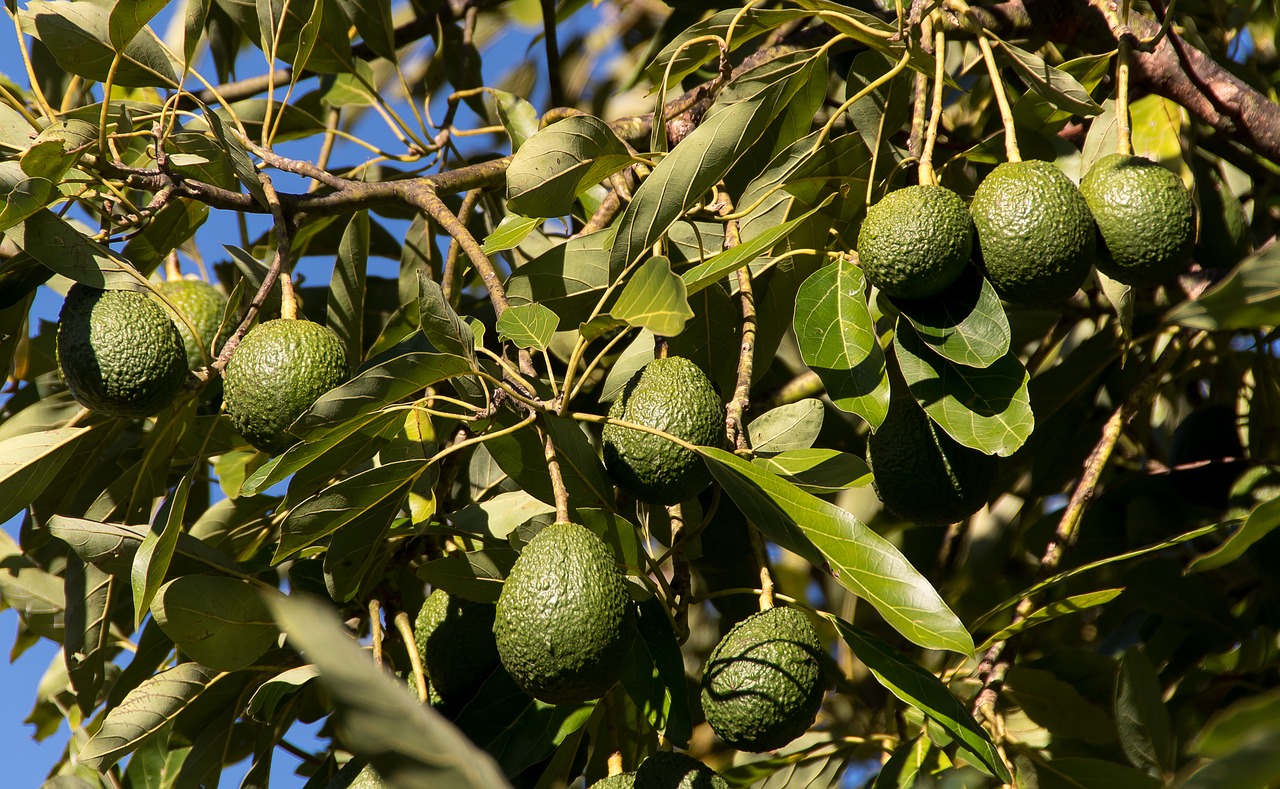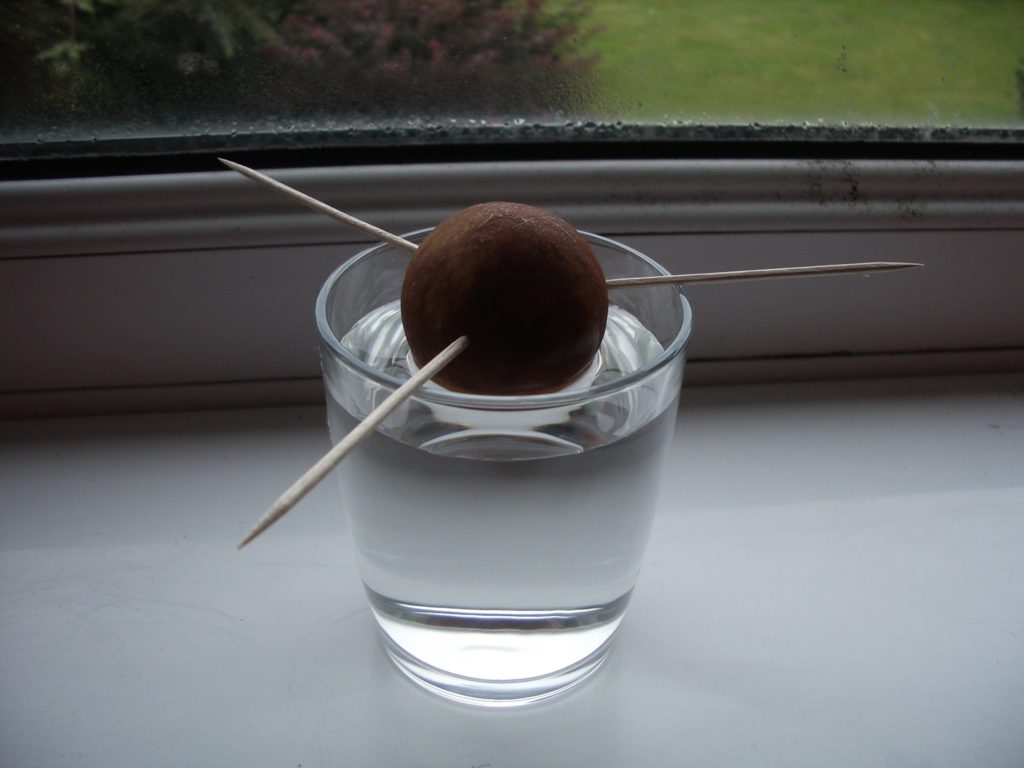
Ever stood in the grocery store, trying to pick the perfect avocado for guacamole and secretly wish you had your own avocado tree so all you had to do it walk outside for avocados? Or should I admit I have a gardening addiction and need to stop thinking about all the stuff I’d love to grow? Well, regardless, if you’ve ever thought about growing an avocado tree, you’ve come to the right place!
Avocados have gained a great amount of popularity as people are shifting toward eating more healthy fats. But they’ve been a popular produce item for many, many centuries.
Native to south-central Mexico, avocado trees have been naturalized across warm climates all over the world. They are cultivated commercially in the Mediterranean and other tropical areas.
Avocado Varieties
With over a hundred different varieties of avocados, they can be grouped into three main “races” or categories based upon their area of origin: Guatemalan, Mexican, and West Indian.
Guatemalan
- Thick, rough skin.
- Fruits average 1/2 to five pounds.
- Medium-to-high fat content.
- Mature in 10 to 15 months.
- Tolerate temperatures as low as 26 to 30 degrees Fahrenheit.
Mexican
- Thin-skinned fruits are small and smooth.
- Green, purple or black in color.
- Typically under 1 pound.
- Ready to harvest in 6 to 8 months.
- Most cold-hardy can tolerate temperatures of 19 to 20 degrees Fahrenheit.
West Indian
- Leathery-smooth skin.
- Low oil content in fruit.
- One to five pounds.
- Milder in flavor than the others.
- Harvestable in 5 to 8 months.
- Cannot tolerate temperatures below freezing.
The most popular variety in the United States, called the Hass, is a hybrid cross between the Guatemalan and Mexican races.
Tree Size
Mature trees can reach heights of 30 to 40 feet, with a spread of 5 to 8 feet wide. Dwarf trees stay under 10 feet tall, making them easier to pick fruit from once they begin to bear fruit.
Pollination
Avocado plants can self-pollinate, but they have evolved over time to ensure genetic diversity. When flowers bloom (after day and nighttime temperatures climb above 70 degrees Fahrenheit) they have both male and female parts but only one sex is active at a time. These differences are differentiation by Type A and Type B avocados.
- Type A: On Day 1 flowers open as a female in the morning and then close; on Day 2 flowers open as a male in the afternoon and then close forever.
- Type B: On Day 1 flowers open as a female in the afternoon; on Day 2 they open as a male in the morning.
Optimal Growing Conditions
Avocado trees grow best when planted in the ground if you can provide these growing conditions.
Hardiness Zones
Due to their origin in tropical areas and the inability to tolerate colder weather, avocados can only be grown outside in USDA Hardiness zones 10-12, which is a very narrow area. This mainly designates spots that rarely ever see frost in their forecast: Hawaii, South Florida, southern inland California, and southern areas of Texas.
Overwintering
In areas where temperatures aren’t warm enough to grow trees outdoors, you can plant them in a container with good drainage holes and bring them into the garage or basement when temperatures drop below 45 degrees Fahrenheit. They do need cooler nighttime temperatures to induce flowering and fruiting so they may not bloom if kept indoors year-round. If they don’t bloom the trees still make a beautiful houseplant.
Sun Exposure
While many of us think avocados are a vegetable, this is a misconception. Avocados are technically a berry as the fleshy part of the avocado surrounds a seed. Like other fruit trees, they need a spot in your garden that receives full sun.
Choose a sunny spot that receives a minimum of 6 to 8 hours of direct, unfiltered sun every day.
Soil Type & pH
The best type of soil for avocado trees is coarse and well-drained such as sandy loam. If your garden soil is heavier or compacted you can “loosen it” by working in finished compost or mulch to improve the drainage.
For the best fruit production check your soil pH and try to keep it at a slightly acidic value; between 6 and 6.5 is recommended by the UCCE Master Gardeners of Orange County.
Water Requirements
Avocado trees need plenty of water as they grow and mature, but they don’t like to have their roots soggy. When watering them it’s best to let the top 1 to 2 inches of soil dry out before giving them a thorough soaking.
Fertilizer Needs
Trees do best with fertilizers specifically formulated for avocados or citrus. It contains more nitrogen than phosphorus or potassium. Look for a formulation that contains the nutrients zinc and iron as they are important for avocado growth and good health.
Container-grown trees should be fertilized every 12 to 16 weeks according to the label directions. For trees grown in the ground, fertilizing them in late winter, midsummer, and again in early fall (according to the rates listed on the fertilizer label) will promote optimum growth.
Growing an Avocado Tree From a Pit

You can take on a DIY project by sprouting an avocado seed in a glass of water! It’s an easy, inexpensive way to grow your own tree and have a supply of fresh avocado fruit.
Supplies
- Avocado pit
- 3 to 4 toothpicks
- Glass or jar
- Water
- Planter
- Potting soil
Growing an Avocado Pit, Step by Step
Starting your own tree from a pit is an adventure in patience, as it can take up to 6 weeks just for roots and a shoot to form, but it’s a great science project especially if you have younger children in the house.
- Wash the pit very well, making sure to remove any and all flesh from the avocado.
- Insert 3 or 4 toothpicks into the pit about one-third of the way down from the pointy end, spreading them out around the circumference. Stick them in far enough you can use that single toothpick to lift and hold the avocado pit.
- Carefully set your pit in the glass container, pointy end up, allowing the toothpicks to rest on the rim, suspending the pit up above the bottom.
- Add enough water to cover the bottom half of the seed.
- Place the pit in a sunny location such as a windowsill that gets direct sunlight.
- Replenish the water every two to three days.
- When the newly growing stem gets to be 6 to 8-inches tall, cut it back by half to encourage bushier growth.
- After new leaves have formed and the root system has grown thicker, transplant your new sapling to a 10- to 12-inch diameter pot.
- Allow it to grow in the container or transplant it to a protected spot outside once it reaches a couple of feet fall.
Q&As About Growing Avocados
Q: Do I need to buy a grafted tree?
A: No, you do not need to buy a grafted tree, but there are advantages to it. A grafted tree has a more mature “top” grafted onto a rooting stock – similar to grafting in apple trees or roses. This means your tree will produce fruit sooner but it does come with a higher price tag for a bigger, more mature tree.
Q. Will trees grown from a pit produce fruit?
A: Yes, avocado trees grown from a pit will produce fruit but it may take 10 years or more from the time the pit is planted for the fruit to develop on the tree. They are much slower to mature and bear fruit than grafted trees.
Q. Why are the leaves on my avocado tree turning yellow?
A: The leaves on your avocado tree are most likely turning yellow because you are overwatering.
Q. Can you grow an avocado tree in a container?
A: Yes, you can grow an avocado tree in a container. It will inhibit the growth of the tree compared to a tree grown outside in the ground, but it’s a good way to grow a tree in colder climates making it easier to bring it into a sheltered spot to overwinter.
Q. Do you need two avocado trees for pollination?
A: No, you do not need to plant two avocado trees to ensure pollination. Trees can self pollinate since their flowers contain both male and female parts.
Q. How do you prune an avocado tree?
A: Historically avocado trees weren’t pruned much as they need lots of leaves to support fruit set and development. If you do want to prune your tree make sure to remove dead and diseased limbs, remove low-lying branches that interfere with access to the canopy, make thinning cuts to let light into the interior, and prune to a height that makes harvesting fruit easy.